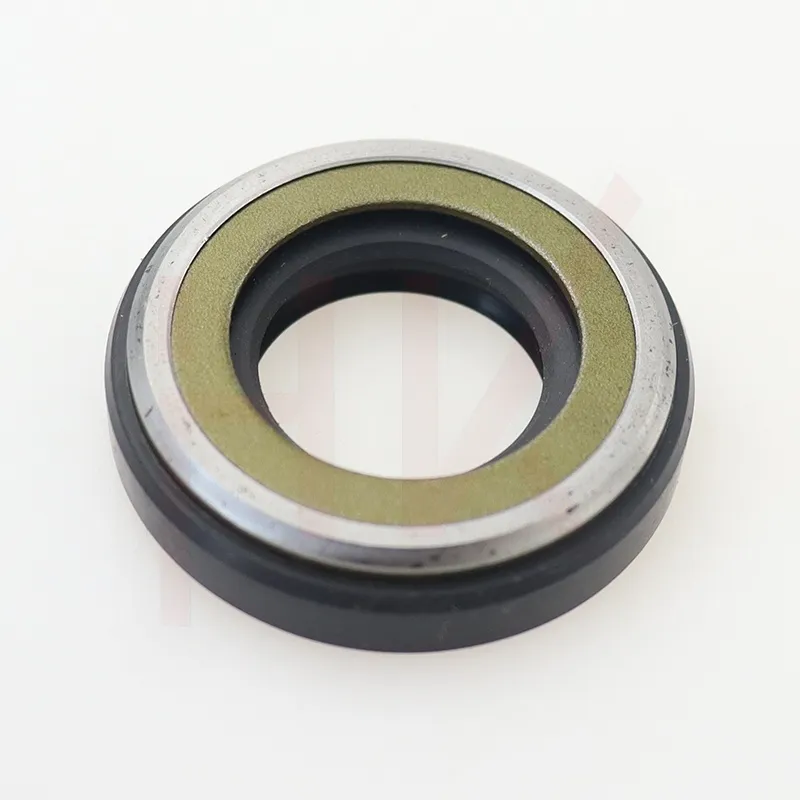12月 . 01, 2024 22:50 Back to list
wiper seal hydraulic cylinder
Understanding Wiper Seals in Hydraulic Cylinders
Wiper seals, also known as dust seals or scraper seals, play a crucial role in the functionality and longevity of hydraulic cylinders. These components are essential in preventing contamination from external elements, ensuring the integrity of hydraulic systems. In this article, we will explore the significance of wiper seals, their design, operational principles, and maintenance to optimize hydraulic cylinder performance.
The Role of Wiper Seals
Wiper seals are located at the outermost part of hydraulic cylinders, acting as the first line of defense against dirt, dust, water, and other contaminants. Hydraulic systems are sensitive to foreign particles, as even minute contaminants can lead to mechanical wear, reduced efficiency, and potential failure. The primary function of a wiper seal is to keep the cylinder rod clean by scraping off any debris that may adhere to it during operation. By maintaining a clean rod surface, wiper seals help guarantee that hydraulic fluid can be effectively contained and that the cylinder operates smoothly.
Design Features
Wiper seals are typically composed of elastomeric materials that provide flexibility and resilience. Common materials include polyurethane, nitrile rubber, and silicone, each chosen for its specific set of properties relevant to the application. Wiper seals come in various designs, including single-lip, double-lip, and spring-loaded configurations, to suit different hydraulic cylinder designs and operational requirements.
1. Single-Lip Wiper Seals These seals have a simple design with one sealing lip that makes contact with the rod. They are effective for standard applications where the primary concern is to prevent contaminants from entering the system.
2. Double-Lip Wiper Seals Featuring two sealing lips, these seals provide an extra layer of protection and are more effective at keeping dirt and moisture out, making them suitable for harsher environments.
3. Spring-Loaded Wiper Seals These seals incorporate a spring that maintains contact with the rod more effectively, adapting to wear over time and ensuring a constant sealing force. Spring-loaded designs are particularly beneficial in high-speed applications where the rod's movement can compromise seal integrity.
Operational Principles
wiper seal hydraulic cylinder

When hydraulic cylinders operate, the rod moves in and out, creating potential paths for contaminants to enter. As the rod retracts, the wiper seal presses against it, scraping off any dirt or debris, which is then pushed away from the seal area. This action prevents contaminants from entering the cylinder and mixing with the hydraulic fluid, which is vital for maintaining system efficiency.
The effectiveness of a wiper seal is determined by its material properties and design. It must withstand not only mechanical wear from the rod's motion but also resist degradation from exposure to hydraulic fluids and environmental conditions. Therefore, manufacturers invest considerable effort into selecting the right materials and designs to ensure durability and reliability.
Maintenance and Best Practices
Proper maintenance of hydraulic systems is essential for ensuring the longevity of wiper seals and overall system performance. Here are some best practices to follow
1. Regular Inspections Perform routine checks on hydraulic cylinders to assess the condition of the wiper seals. Look for signs of wear, tearing, or hardening of the seal material.
2. Cleaning Procedures Clean the exposed surfaces of the cylinder rods regularly to minimize the buildup of dirt and contaminants. This practice prolongs the lifespan of wiper seals and reduces the risk of contamination.
3. Hydraulic Fluid Quality Use high-quality hydraulic fluids that are compatible with the seal materials. Poor-quality fluids can hasten seal degradation and lead to failures.
4. Replacement When wiper seals show signs of wear or damage, prompt replacement is necessary to maintain system integrity. Using the correct replacement seals for specific applications is critical for optimal performance.
Conclusion
Wiper seals are integral components of hydraulic cylinders, providing essential protection against contamination. Their proper selection, maintenance, and timely replacement are vital in ensuring the durability and efficiency of hydraulic systems. By understanding the importance and functionality of wiper seals, operators can enhance the performance of their hydraulic equipment, ultimately leading to increased productivity and reduced downtime.
-
TCN Oil Seal Metal Ring Reinforcement for Heavy Machinery
NewsJul.25,2025
-
Rotary Lip Seal Spring-Loaded Design for High-Speed Applications
NewsJul.25,2025
-
Hydraulic Cylinder Seals Polyurethane Material for High-Impact Jobs
NewsJul.25,2025
-
High Pressure Oil Seal Polyurethane Coating Wear Resistance
NewsJul.25,2025
-
Dust Proof Seal Double Lip Design for Construction Equipment
NewsJul.25,2025
-
Hub Seal Polyurethane Wear Resistance in Agricultural Vehicles
NewsJul.25,2025
-
The Trans-formative Journey of Wheel Hub Oil Seals
NewsJun.06,2025
Products categories
















